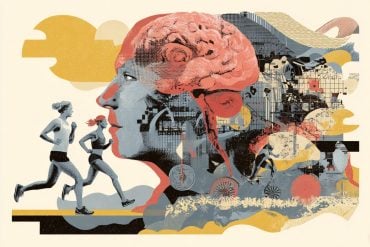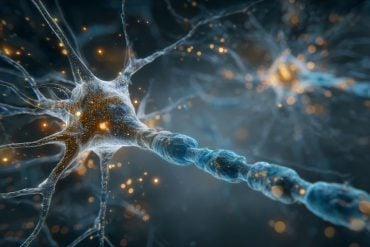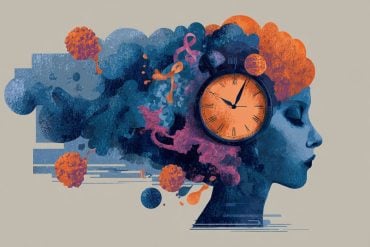Summary: A new study has found that sexual narcissism mediates the link between childhood trauma and compulsive sexual behavior. Researchers compared individuals with and without compulsive sexual behavior, measuring trauma history, sexual narcissism, and hypersexuality.
Those with compulsive sexual behavior scored higher in all three areas, and statistical analysis showed that trauma predicted narcissistic sexual attitudes, which in turn predicted hypersexuality. The findings suggest that addressing sexual narcissism could be a key component in treating compulsive sexual behavior, particularly in individuals with histories of abuse or neglect.
Key Facts
- Mediating Role: Sexual narcissism significantly mediated the relationship between childhood trauma and hypersexual behavior, explaining over 60% of the variance.
- Higher Risk Group: Individuals with compulsive sexual behavior scored higher in trauma history, sexual narcissism, and hypersexuality than controls.
- Demographic Trends: Men, religious participants, bisexual individuals, and non-academics reported higher hypersexuality scores.
Why This Matters
- Why This Matters: Identifies a clear psychological pathway from childhood trauma to compulsive sexual behavior, offering a new focus for prevention and treatment.
- How This Aligns with Previous Research: Supports earlier findings linking abuse history to hypersexuality and builds on work showing narcissistic traits can influence sexual aggression and risk-taking.
- Future Implications: Could inform the development of targeted therapy modules addressing sexual narcissism within trauma-informed treatment programs for compulsive sexual behavior.
Source: Neuroscience News
A new study has uncovered a striking psychological pathway linking early-life adversity to compulsive sexual behavior: childhood trauma appears to foster sexual narcissism, which in turn fuels hypersexuality.
By examining both individuals seeking treatment for compulsive sexual behavior and a control group without these difficulties, the researchers found that this combination of past harm and personality traits could explain more than 60% of the variance in compulsive sexual behavior scores.
Hypersexuality, sometimes referred to as Compulsive Sexual Behavior Disorder (CSBD), describes persistent and excessive sexual urges, fantasies, or behaviors that are difficult to control and continue despite negative consequences.
Sexual narcissism—a more focused form of narcissism—centers on sexual relationships, characterized by an inflated sense of one’s sexual desirability, entitlement in sexual contexts, low empathy, and an exploitative approach toward partners.
Together, they form a potent mix that can perpetuate risky or harmful sexual patterns.
Study Design and Participants
The study included 118 adults aged 18–59, split evenly between a group meeting CSBD criteria and a matched control group. Those in the CSBD group were recruited from support programs such as Sexaholics Anonymous, while controls came from the general population.
Participants completed the Childhood Trauma Questionnaire to capture histories of abuse and neglect, the Sexual Narcissism Scale to assess attitudes and behaviors in sexual contexts, and the Hypersexual Behavior Inventory to measure compulsive sexual behavior.
Key Findings: Trauma, Narcissism, and Behavior
Across the board, individuals with CSBD scored higher than controls on childhood trauma, sexual narcissism, and hypersexuality. Statistical modeling revealed that sexual narcissism acted as a mediator between trauma and hypersexuality—suggesting that early abuse or neglect increases the likelihood of developing exploitative, entitlement-based sexual attitudes, which then contribute to compulsive sexual behavior.
This mediation effect was strong: the two factors together explained over 60% of hypersexuality variance. The findings suggest that targeting sexual narcissism in therapy could be particularly effective for individuals with a history of childhood trauma.
Demographic and Social Patterns
Several patterns emerged:
- Men scored higher on hypersexual behavior than women.
- Among those with CSBD, religious participants scored higher on both sexual narcissism and hypersexuality than their non-religious counterparts.
- Bisexual participants reported higher hypersexuality than heterosexual or homosexual participants.
- Non-academic participants scored higher than those with higher education.
While notable, these trends require replication in larger, more diverse samples.
Why These Results Matter
These findings highlight the need for treatment approaches that address both the legacy of childhood trauma and the maladaptive sexual attitudes that may stem from it.
For some, hypersexual behavior may operate as a maladaptive coping mechanism, and sexual narcissism may reflect learned patterns of control, self-protection, or validation-seeking. Empathy training, entitlement restructuring, and trauma-informed care could improve recovery outcomes.
Looking Forward
The researchers acknowledge the study’s limits, including its cross-sectional design, self-reported measures, and culturally homogenous sample. Future research should explore these relationships over time, assess whether reducing sexual narcissism reduces hypersexuality, and examine these dynamics in more culturally varied populations.
By illuminating how trauma, personality, and sexual behavior intersect, this work provides both clinicians and researchers with a clearer map of CSBD’s underlying drivers—and new opportunities for more targeted, effective interventions.
About this behavioral neuroscience and neurodevelopment research news
Author: Neuroscience News Communications
Source: Neuroscience News
Contact: Neuroscience News Communications – Neuroscience News
Image: The image is credited to Neuroscience News
Original Research: Open access.
“A Study on Childhood Trauma and Sexual Narcissism in Individuals with Compulsive Sexual Behavior Receiving Counseling” by Rotem Yaakov et al. Archives of Sexual Behavior
Abstract
A Study on Childhood Trauma and Sexual Narcissism in Individuals with Compulsive Sexual Behavior Receiving Counseling
Compulsive sexual behavior (CSB) has been associated with trauma and neglect in childhood. There is evidence that CSB is related to child physical and sexual abuse.
Sexual narcissism was linked with aggression, sex at a young age, and many partners for sex.
This study examined the associations between childhood abuse and neglect, sexual narcissism, and hypersexual behavior among participants of a sex addiction support group and a group of control participants.
Participants were 118 adults, including 72 men and 46 women, with a mean age of 32 years (SD = 9.32) and an age range of 18–59.
The sample included 59 participants in the sex addiction group (sexaholics anonymous, SA), 36 men and 23 women with a mean age 31.41 years (SD = 8.13), and the control group from the general population included 36 men and 23 women with a mean age 32.47 years (SD = 10.42).
Questionnaires included a sociodemographic questionnaire, the Hypersexual Behavior Inventory, the Sexual Narcissism Scale, and the Childhood Trauma Questionnaire. Childhood trauma was associated with sexual narcissism and with hypersexual behavior.
A mediation model showed that sexual narcissism and child trauma significantly contributed to ratings of hypersexual behavior, and explained 60.3% of the variance of hypersexual behavior ratings.
In addition, using the Bootstrapping method, the indirect effects found in this model showed that sexual narcissism increased the likelihood of hypersexual behavior, and it was a significant mediating factor between trauma and hypersexual behavior.
In summary, this study indicates that sexual narcissism mediated the relationships between childhood trauma and hypersexual behavior.
These findings explain the role of sexual narcissism and CSA in hypersexual behavior and it may have clinical implications for the treatment of CSB disorder.








